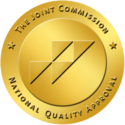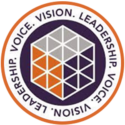You want to be there for your loved one struggling with mental health issues, but sometimes it can be hard to know the difference between helping and enabling. If you’ve ever paid their bills when they overspent, made excuses for them at work or school, or felt like you were walking on eggshells to avoid upsetting them, you may be enabling their unhealthy behavior.
It’s critical to comprehend how helping vs enabling differ from one another because the line between the two isn’t always obvious. The good news is that there are supportive ways to be there for someone dealing with depression, anxiety, addiction, or other mental health issues.
With understanding, compassion, and the right resources, you can empower them to build their mental strength and independence. Eagle Creek Ranch Recovery in Nampa, Idaho is here to offer support and healing.
The Difference Between Helping and Enabling
Helping and enabling are two concepts that are often used in the context of supporting someone or addressing their needs. While both involve assisting, there is a significant difference between the two.
Helping promotes self-sufficiency and independence by empowering individuals to take control of their lives and make positive changes. Enabling, however, fosters dependence and reinforces the belief that the person cannot or should not take responsibility for their actions.
Helping focuses on long-term outcomes and personal growth, aiming to address the root causes of problems and promote sustainable solutions. Enabling often provides temporary relief or immediate gratification, but it can perpetuate a cycle of negative behavior and hinder long-term progress.
Helping encourages accountability, as individuals are encouraged to take responsibility for their actions and face the consequences. Enabling tends to make excuses or shield individuals from the consequences, preventing them from learning from their mistakes or taking ownership of their choices.
Helping generally has a positive impact, as it supports individuals in developing skills, confidence, and resilience. Enabling, in contrast, can have negative consequences by reinforcing negative behavior, dependency, or a sense of helplessness.
In summary, helping involves providing support that encourages personal growth and self-reliance, while enabling involves assisting someone in ways that perpetuate negative patterns or hinder their progress. It’s important to be mindful of the impact of our actions and ensure that our support is genuinely helpful rather than enabling unhealthy behaviors.
What Does Enabling Look Like?
If you find yourself frequently making excuses for your loved one’s unhealthy behaviors or poor choices, this is a sign you may be enabling them. Saying things like “They’re just having a bad day” or “They didn’t mean it” is enabling because you’re making excuses for them instead of holding them accountable.
- Allowing irresponsibility. Do you do things for them that they should be doing themselves? This prevents them from facing the consequences of their actions and learning independence.
- Not establishing boundaries. Healthy boundaries are important for any relationship. If you don’t express how their behavior makes you feel or what you will and won’t tolerate, they will continue to take advantage of you.
- Preventing self-care. Are you so focused on your loved one that you neglect yourself? It’s important to also prioritize your mental health. Make time for hobbies, socializing, and relaxation. Your loved one’s progress depends on you being in a good place yourself.
- Covering up problems. Hiding your loved one’s issues from others to “protect” them will only enable the unhealthy behavior to continue. Don’t be afraid to speak up if you need help establishing boundaries or ensuring accountability.
What Does Helping Look Like?
Helping means offering support without enabling unhealthy behavior. It is helping a loved one with mental health issues and providing resources and support to empower them. It is not enabling destructive behavior. Some signs you’re helping and not enabling:
- You encourage your loved one to take responsibility for their actions and make positive choices. You offer advice and guidance to motivate them but allow them to make their own decisions.
- You set clear boundaries and don’t make excuses for unacceptable behavior. You express how their actions make you feel without judgment.
- You suggest professional treatment options like therapy or medication and offer to help find resources, but don’t force them into it. The choice is up to them.
- You spend time listening without judgment when they want to open up. You show empathy and compassion but also share your honest perspective when needed.
- You take care of yourself too. Helping a loved one with mental health issues can be emotionally draining. Make sure to maintain your support system and boundaries.
The 6 Dangers of Enabling Mental Health
While enabling comes from a place of care and concern, it is ultimately harmful. Some of the dangers of enabling include:
Enabling can reinforce and perpetuate negative patterns or destructive behaviors. By shielding someone from the consequences of their actions or decisions, enabling prevents them from experiencing the natural outcomes that could motivate change. This can create a cycle where the individual continues engaging in harmful behavior without seeking help or making positive changes.
Enabling can hinder personal growth and development. When individuals are constantly rescued or protected from the negative consequences of their actions, they may become dependent on others and fail to develop the necessary skills, resilience, and problem-solving abilities. This can result in a lack of personal growth and a sense of helplessness.
Enabling can erode self-esteem and self-efficacy. When individuals are not allowed to face challenges, make decisions, or experience the consequences of their actions, they may develop a diminished sense of self-worth and confidence. This can further contribute to a cycle of dependence and a belief that they are incapable of managing their own lives.
Enabling can strain relationships between the enabler and the enabled person. Resentment may develop as the enabler becomes increasingly frustrated with the lack of progress or change in the enabled individual’s behavior. This can lead to tension, conflict, and a breakdown in trust and communication.
Enabling can hurt the emotional and mental well-being of both the enabler and the enabled person. The enabler may experience feelings of guilt, stress, and burnout from constantly being in a caretaker role. The enabled person may struggle with a lack of autonomy, feelings of learned helplessness, and a distorted perception of their abilities.
Enabling can have practical consequences, particularly when it comes to financial support. Providing constant financial assistance without accountability or encouraging responsible financial management can lead to dependency, financial instability, and an inability to develop essential life skills.
How can I Help vs. Enable?
To help someone without enabling unhealthy behavior, it’s important to approach the situation with care, boundaries, and a focus on promoting their well-being and personal growth. Here are some effective strategies to assist without enabling:
Promote accountability by encouraging the person to take responsibility for their actions and the consequences that arise from them. Help them recognize their role in their current situation and empower them to make positive choices and decisions.
Establish clear boundaries regarding what you are willing and able to do to help. Communicate your limits and make it known that you will not enable destructive behavior. By setting boundaries, you encourage the person to take ownership of their challenges and seek healthier ways to address them.
Offer guidance and support in finding appropriate resources or solutions to their problems. Help them identify constructive steps they can take to overcome challenges, such as connecting them with professional help, educational materials, support groups, or counseling services.
Encourage the development of skills and independence by empowering the person to solve their problems. Offer guidance and support in acquiring new skills, setting goals, and making positive changes in their lives. Focus on building their confidence and self-efficacy.
Create an environment that supports positive change and growth. Surround the person with positive influences, such as supportive friends, family, or mentors. Encourage participation in activities or communities that promote healthy behaviors and provide positive role models.
Show empathy and actively listen to the person’s concerns and challenges. Validate their emotions and experiences while still holding them accountable for their actions. Be supportive, but also encourage them to explore alternative perspectives and consider the long-term consequences of their choices.
Help the person reflect on their behaviors, choices, and the impact they have on their life and others around them. Encourage self-awareness and reflection to foster personal growth and the motivation to make positive changes.
Stay consistent in your approach and avoid wavering in your boundaries or enabling behaviors. It’s important to remain firm in your commitment to helping without enabling, even if it may be difficult or uncomfortable at times.
Remember, helping someone effectively requires finding a balance between offering support and encouraging personal responsibility. Tailoring your approach to the specific situation and the individual’s needs is important.
Eagle Creek Ranch Recovery is Here to Assist You
Eagle Creek is dedicated to providing comprehensive assistance and unwavering support to individuals dealing with mental health conditions. We understand the challenges and complexities that arise from these conditions, and we are here to help you navigate through them.
Our compassionate team of professionals is committed to offering a safe and inclusive environment where you can openly discuss your experiences, concerns, and goals. Whether you need access to therapy, counseling, educational resources, or a supportive community, Eagle Creek is here to guide you on your journey toward mental well-being. We firmly believe in promoting self-care, empowerment, and personal growth, and we are dedicated to working collaboratively with you to develop effective strategies and tools for managing your mental health condition. You are not alone—we are here to support you every step of the way. Contact us today!

Clinical Director
Kendall Maloof is the clinical director at Eagle Creek Ranch Recovery. She is a licensed marriage and family therapist and has held multiple leadership roles before settling here at Eagle Creek. Kendall received her master’s degree in marriage and family therapy from the Chicago School of Professional Psychology in 2016. Her career in mental and behavioral health began in 2014 when she took up internships in both the nonprofit and for profit sectors. She interned at multiple reputable companies, such as The Living Success Center and 449 Recovery in California.
In 2019, Kendall became the clinical director of Sunsets Recovery for Woman, a dual diagnosis program in southern California. Kendall is a natural leader. She has an incredible ability to problem solve and stay calm in any situation. Kendall never fails to show up when she is needed, and her calm demeanor makes her team and clients feel at ease. Eagle Creek Ranch Recovery is proud to have Kendall as our clinical director.




